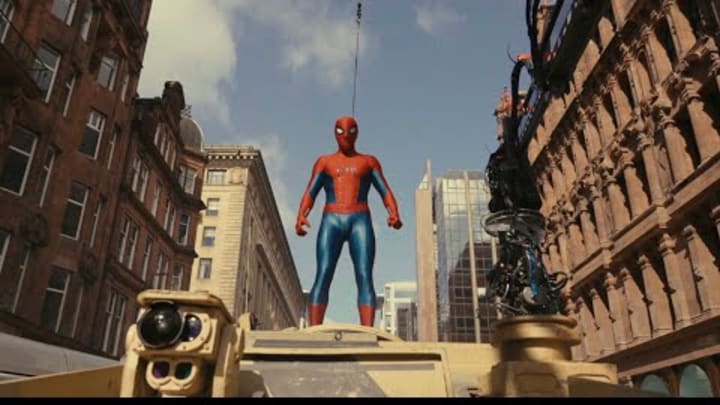The Marvel Cinematic Universe is an undisputed triumph of long-term storytelling. The fact that franchise architects such as Kevin Feige have been able to tell interwoven serialized stories over the course of multiple films, television shows, and beyond, and have them still culminate in meaningful and affecting ways is remarkable. However, this approach has also very much not come without its pitfalls. For as awe-inspiring as the accomplishments of the MCU are when the franchise is viewed on a holistic level, many of those strengths directly correlate to frustrating or exhausting weaknesses within the individual films on a more individualized level. Perhaps no character is more indicative of this than Tom Holland’s Spider-Man.
After years of being the sole cinematic property of Sony with films like Sam Raimi’s Spider-Man in the 2000s and Marc Webb’s The Amazing Spider-Man in the 2010s, the iconic web-slinger finally made his way over into the MCU and got to interact with other established comic book heroes in 2016’s Captain America: Civil War. The film debuted the new MCU iteration of the character and the young Tom Holland’s performance, both of which were greeted with praise by fans and critics alike. This was followed up the next year with a new solo movie, Jon Watts’ Spider-Man: Homecoming. The film was highly praised on many fronts, but it did serve to introduce a few key concerns for Spider-Man’s most faithful fans.
For one, the character seemed overly reliant upon Robert Downey Jr.’s Tony Stark as a mentor and provider, something which many viewed as antithetical to the most common characterization in previous films of a down-on-his-luck, living paycheck-to-paycheck student who is also just trying to do good on his own meager means as your friendly neighborhood Spider-Man. Secondly, carrying over a tradition that became more common in The Amazing Spider-Man 2, the film’s approach to swinging, action, and choreography was far less tactile than Raimi’s films were. Instead, as with many films in the MCU, the action was highly reliant upon extensive CGI and digital effects work. Each of these issues only grew more exacerbated in Watts and Holland’s subsequent films, with Spider-Man: No Way Home being especially notable for its heavy use of CGI for just about everything, partially in response to filming during COVID-fueled lockdowns.

This is what makes the recent start of production for the fourth film in this series, Spider-Man: Brand New Day, highly notable. With a new director onboard in the form Shang-Chi’s own Destin Daniel Cretton, the fourthquel’s filming began in Scotland earlier this month in a very public area, showcasing how the filming was utilizing practical effects, real-life swinging mechanics, and an actual city as a backdrop rather than blue screens.
Even prior to releasing their own official teaser that featured footage from the first few days of shooting, this was an extremely savvy marketing move on Sony and Marvel’s part. In many ways, it is following the same playbook that Marvel has utilized for their last two films, Thunderbolts* and The Fantastic Four: First Steps, with the marketing going out of its way to emphasize that this is not just another MCU project, but rather one that is going all-in on traditional filmmaking methodology and prioritizing real, tactile effects.
As soon as filming began, videos began to circulate online and across social media platforms of Holland in his new Spider-Man suit (which is a far more classical, traditional design as opposed to the tech-heavy iterations of prior films) swinging around the city streets, dodging practical explosions, and interacting with real-life fans on-set.
All of these factors have served to assuage the concerns that have been percolating about this take on the character for years, showcasing a self-made Spider-Man who isn’t reliant upon Tony Stark’s technology, and with the film embracing practical stunts on a level not seen since the Raimi films of the early ‘00s.
In this way, Spider-Man: Brand New Day is off to a phenomenal start with its marketing efforts, giving fans a chance to get excited about the film’s form and content in equal measure, while also giving audiences across the world a unique behind the scenes look at how this film is being made.
Spider-Man: Brand New Day arrives in movie theaters on July 31, 2026.
More from Bam Smack Pow:
